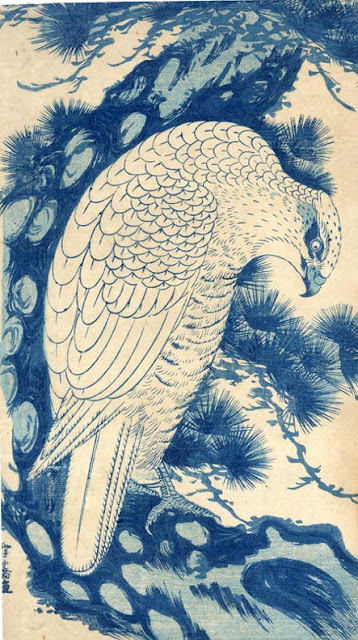 |
| Ohara Koson: Crow on a Snowy Bough |
This is a kachô-e by Ohara Koson (1877-1945), who was a brilliant artist when it comes to kachô-e within the shin hanga movement.
Kachô-e is a subgenre of ukiyo-e, shin hanga and Japanese art in general. Originally, its motives were flowers and birds, but more generally, it comprises flora and fauna.
Japanese names are written with the family name first. Artists are mostly signing with their given name or a pseudonym. Ohara Koson signed his works "Koson", later "Shōson", and sometimes "Hoson".
This print, Crow on a Snowy Bough, was made some time between 1900 and 1910.






